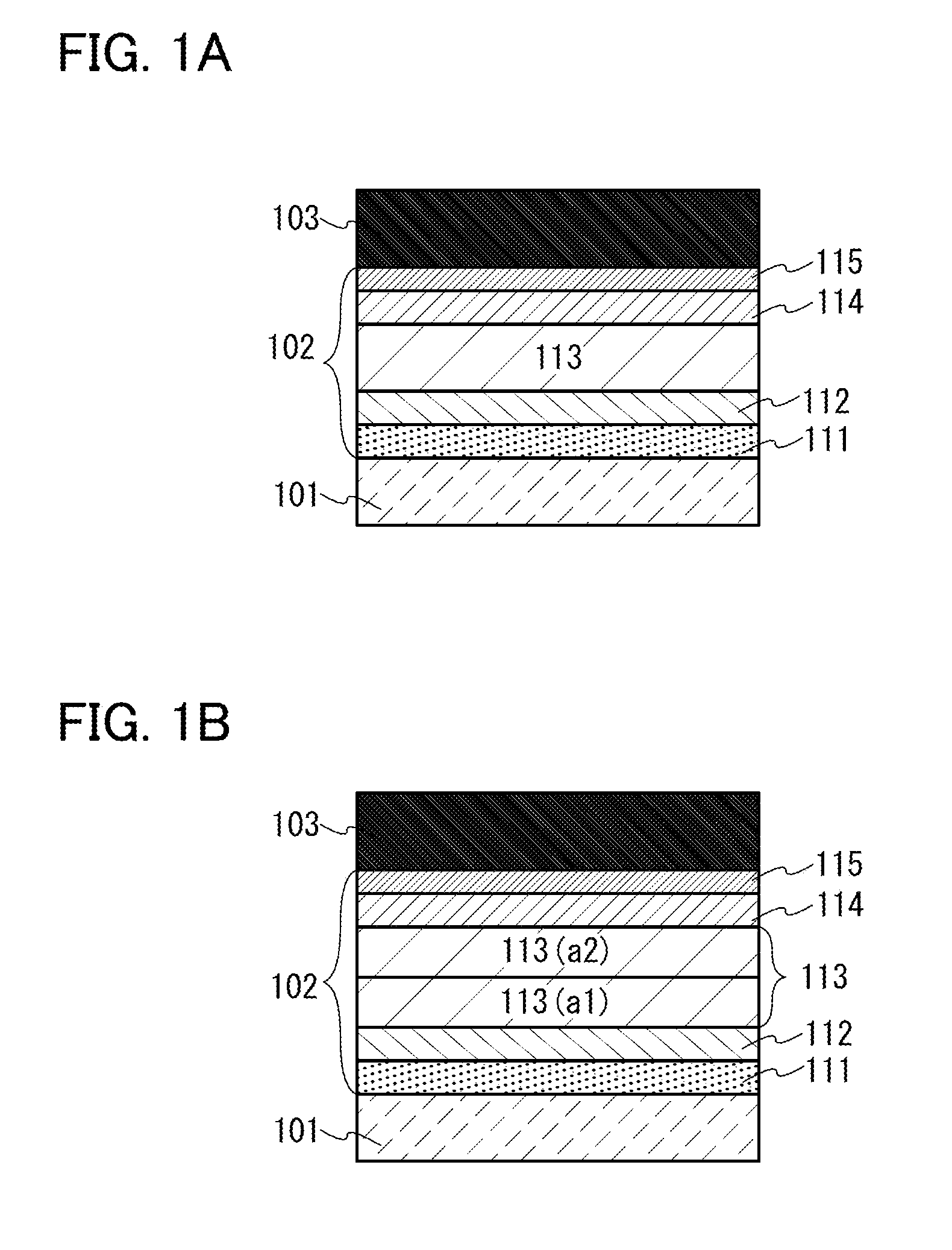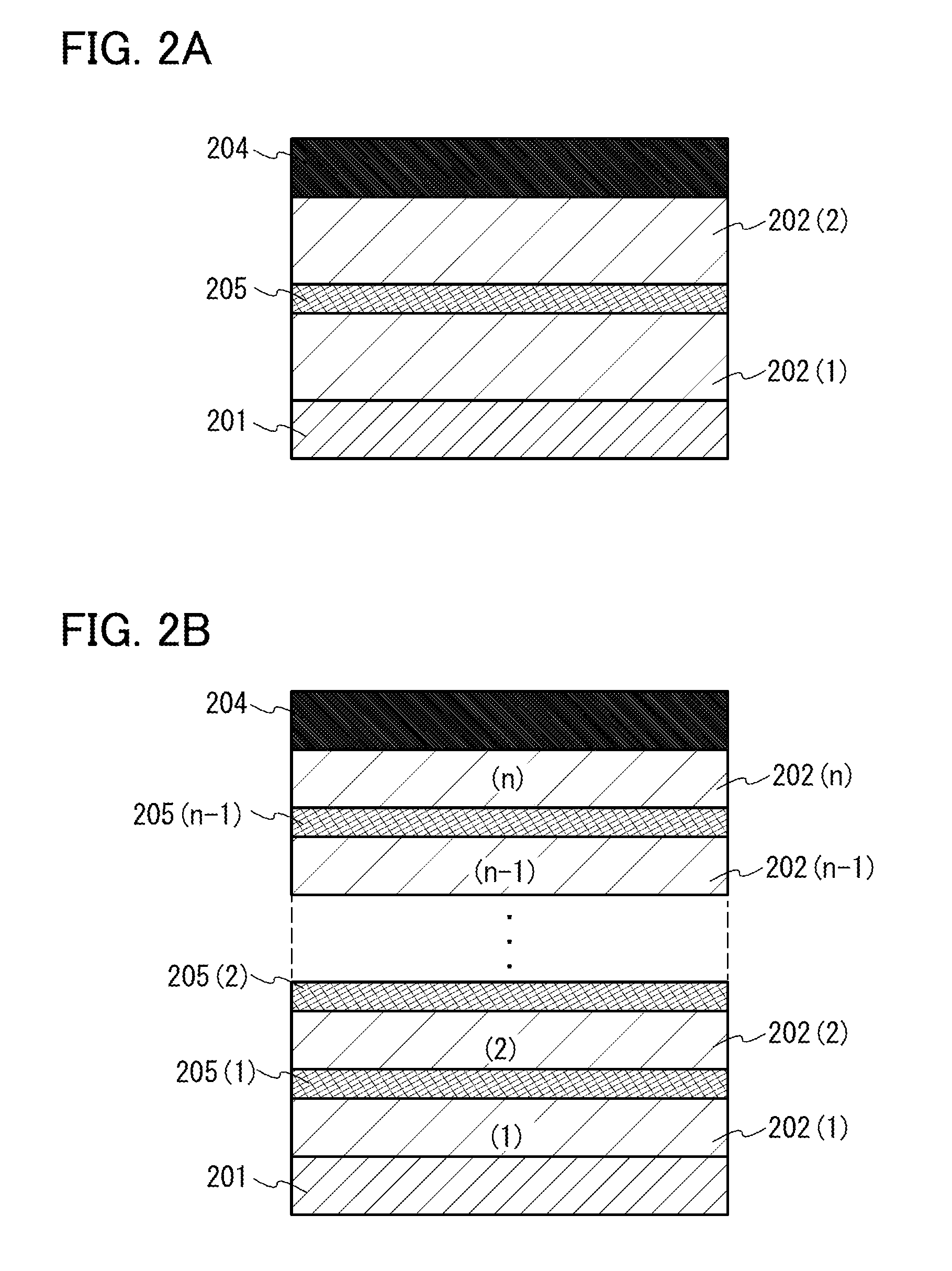Heterocyclic compound, light-emitting element, light-emitting device, electronic device, and lighting device
- Summary
- Abstract
- Description
- Claims
- Application Information
AI Technical Summary
Benefits of technology
Problems solved by technology
Method used
Image
Examples
embodiment 1
[0061]In this embodiment, a heterocyclic compound which is one embodiment of the present invention will be described.
[0062]In the heterocyclic compound described in this embodiment, a substituted or unsubstituted dibenzo[f,h]quinoxalinyl group is bonded to a substituted or unsubstituted benzobisbenzofuranyl group via a substituted or unsubstituted arylene group.
[0063]In general, it is known that when the number of condensed rings that form a molecular structure of an organic compound is increased, the organic compound having more condensed rings is improved in heat resistance with an increase in molecular weight, and long lifetime can be expected when the organic compound is used for a light-emitting element. However, when the number of condensed rings is increased, the molecular structure becomes more planar. Thus, heat resistance and triplet excited level (T1 level) of the organic compound are reduced because a thin film of the organic compound is easily crystallized, for example,...
embodiment 2
[0102]In this embodiment, a light-emitting element which is one embodiment of the present invention will be described with reference to FIGS. 1A and 1B.
[0103]In the light-emitting element described in this embodiment, an EL layer 102 including a light-emitting layer 113 is interposed between a pair of electrodes (a first electrode (anode) 101 and a second electrode (cathode) 103), and the EL layer 102 includes a hole-injection layer 111, a hole-transport layer 112, an electron-transport layer 114, an electron-injection layer 115, and the like in addition to the light-emitting layer 113.
[0104]When a voltage is applied to the light-emitting element, holes injected from the first electrode 101 side and electrons injected from the second electrode 103 side recombine in the light-emitting layer 113; with energy generated by the recombination, a light-emitting substance such as an organometallic complex that is contained in the light-emitting layer 113 emits light.
[0105]The hole-injection...
embodiment 3
[0134]In this embodiment, a light-emitting element (hereinafter referred to as a tandem light-emitting element) which is one embodiment of the present invention and includes a plurality of EL layers will be described.
[0135]A light-emitting element described in this embodiment is a tandem light-emitting element including, between a pair of electrodes (a first electrode 201 and a second electrode 204), a plurality of EL layers (a first EL layer 202(1) and a second EL layer 202(2)) and a charge-generation layer 205 provided therebetween, as illustrated in FIG. 2A.
[0136]In this embodiment, the first electrode 201 functions as an anode, and the second electrode 204 functions as a cathode. Note that the first electrode 201 and the second electrode 204 can have structures similar to those described in Embodiment 2. In addition, either or both of the EL layers (the first EL layer 202(1) and the second EL layer 202(2)) may have structures similar to those described in Embodiment 2. In other ...
PUM
 Login to View More
Login to View More Abstract
Description
Claims
Application Information
 Login to View More
Login to View More - R&D
- Intellectual Property
- Life Sciences
- Materials
- Tech Scout
- Unparalleled Data Quality
- Higher Quality Content
- 60% Fewer Hallucinations
Browse by: Latest US Patents, China's latest patents, Technical Efficacy Thesaurus, Application Domain, Technology Topic, Popular Technical Reports.
© 2025 PatSnap. All rights reserved.Legal|Privacy policy|Modern Slavery Act Transparency Statement|Sitemap|About US| Contact US: help@patsnap.com



